GAMMON CONSTRUCTION
Construction 2.0 technologies advance the reindustrialization of Hong Kong
THE NEW POSSIBLE
Share this story
BIM and prefabrication technologies accelerate construction of the Advanced Manufacturing Centre
As part of Hong Kong’s efforts to expand manufacturing and construction, Gammon Construction built the Advanced Manufacturing Centre to cutting-edge industrial standards. Following the innovation practices of the government’s Construction 2.0 initiative, the firm used BIM (Building Information Modeling), a digital twin, and DfMA (design for manufacture and assembly) to make construction safer and faster. Gammon also implemented training and mentoring to promote new professional skills that will revitalize the local construction industry.
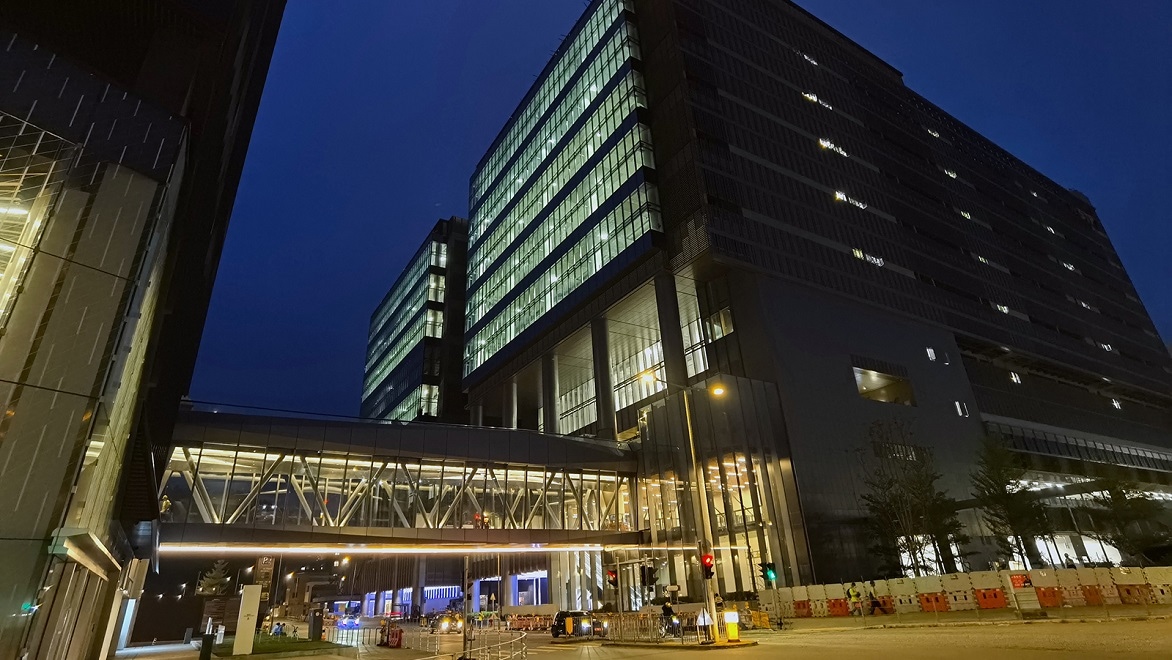
The Advanced Manufacturing Centre, located in in Tseung Kwan O, Hong Kong, is a 9-story advanced and scalable industrial facility designed to support multiple industries. Image courtesy of Gammon Construction.
A boost in construction to bring back factory jobs
Hong Kong is on the road to reindustrialization, with its government providing billions of dollars to bring the manufacturing industry back to bolster the economy, create new opportunities, and retain talent. One of the flagship projects of this effort is the Hong Kong Advanced Manufacturing Centre (AMC), a 1.1 million-square-foot facility conceived to support innovative manufacturing processes and technologies—including 3D printing, robotics, and shared services for prototyping, assembly, logistics, and storage.
Building AMC to meet cutting-edge industrial requirements would call for the advanced technologies and streamlined processes of digitized construction. Hong Kong Science and Technology Parks Corporation, the state-owned body overseeing the project, looked to the practices of Construction 2.0, an initiative to reform and upgrade the construction industry focusing on three key pillars: innovation, professionalism, and revitalization.
Gammon Construction, a construction and engineering contractor with headquarters in Hong Kong, was tasked with bringing AMC to life and integrating Construction 2.0 into the building development and construction process. Gammon leveraged technology to address labor shortages and site safety issues, shorten construction time, and handle the unique challenges of an advanced manufacturing facility.
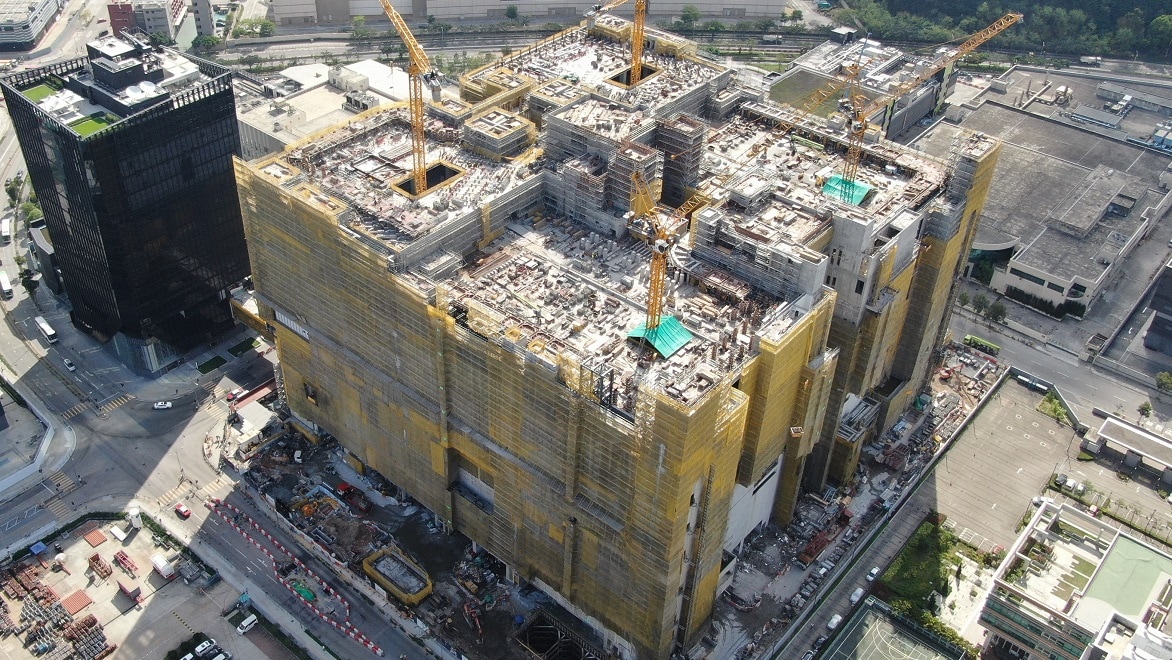
The AMC project team used BIM tools and technologies throughout the project lifecycle, from design coordination to the supervision of different work trades, to reduce costs, safety risks, and construction time. Image courtesy of Gammon Construction.
Gammon Construction encourages innovation
Well-known for delivering complex multidisciplinary projects in Hong Kong and Southeast Asia, Gammon put all its significant experience, resources, and innovation into the AMC project. The team used BIM (US Site) throughout the project lifecycle, reflecting the industry changes brought about by the Construction 2.0 initiative. A key strategy from the beginning was developing 3D BIM models using Revit and Navisworks to create a digital twin (US Site).
“We used the digital twin during our workshops so all stakeholders—engineers, workers, supervisors—can simulate the works before they’re carried out,” says Sammy Lai, a director at Gammon Construction. “They can understand the procedures, design a sequence of work, and decide on the workflow.” The firm also used the digital twin to uncover safety and design issues using clash detection and buildability analysis. “If we have good coordination and do it right the first time, we can enhance quality,” he says.

A section view of AMC shows color-coded building components. Almost 75% of the construction components were prefabricated with DfMA and MiMEP. Image courtesy of Gammon Construction.
DfMA optimizes prefabrication for construction
Gammon combined traditional construction techniques with more modern methods, such as design for manufacture and assembly (DfMA) and multitrade integrated mechanical, electrical, and plumbing (MiMEP). DfMA prefabrication involves manufacturing building components off-site and then assembling and installing them on-site, while MiMEP adopts DfMA for mechanical, electrical, and plumbing components.
The firm established three off-site factories and one on-site factory to manufacture and construct more than 7,000 MiMEP modules, which streamlined the process considerably. “Normally, we would hand over plant rooms to the subcontractors and workers for installation of MEP components, and it would take them around 30 to 45 days,” Lai says. “But now, installation can be done in just one day.”
Text-only; 1 column
In addition to saving time and money, Gammon found that DfMA and MiMEP solves broader issues by making construction safer and addressing labor shortages. “A factory is a well-controlled environment, so it can be much safer than constructing on-site, especially for an aging workforce,” Lai says. “And due to labor shortages, it would be easier for us to hire people to work in a factory than on-site.”
To further speed up construction, Gammon used precast concrete double tee slabs. “The original design of the structure is a flat slab structure with very thick slabs, so you can imagine a lot of concrete being poured during construction,” Lai says. “It also poses problems with sequence and logistics. Using precast double tee slabs, we still achieve the same structural performance while reducing the amount of concrete by 60%, leading to less wastage.”
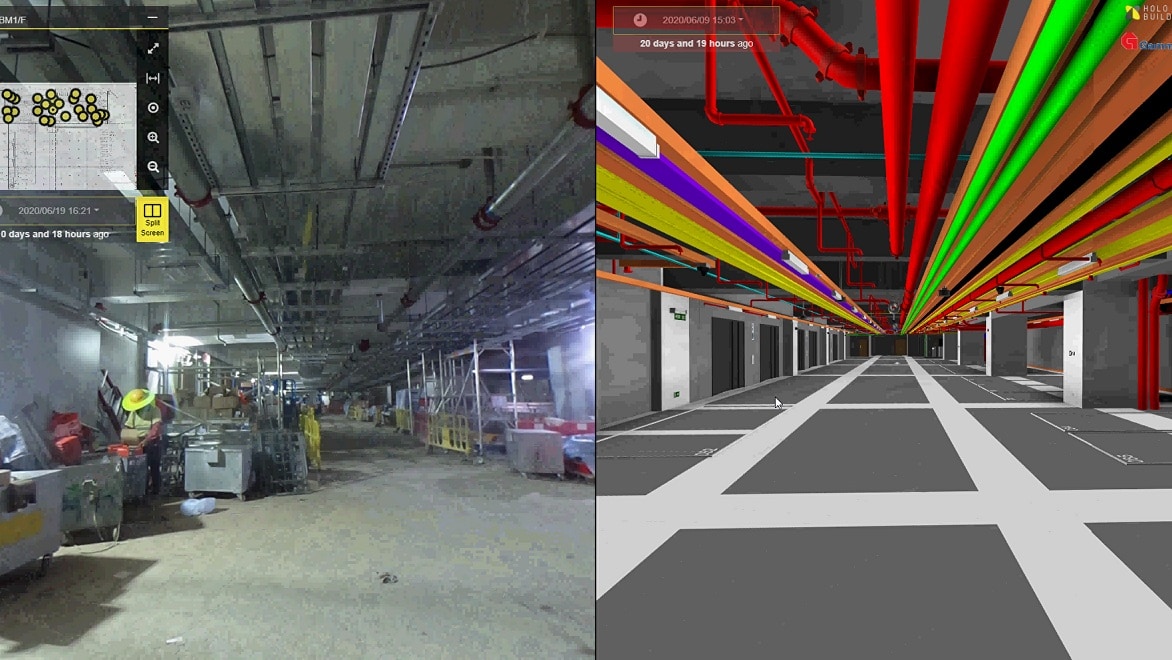
Gammon introduced a mobile app to make initiating changes easier, faster, and more efficient for subcontractors. Image courtesy of Gammon Construction.
Tackling challenges with mobile BIM technologies
Change management was one of the biggest challenges Gammon faced. For a large project like AMC, initiating a change order meant getting all stakeholders to agree on and understand the change. Lai cites a new initiative Gammon introduced—a mobile app that incorporates technology such as augmented reality and makes a handover easier, faster, and more efficient for subcontractors—as an example of how the company tackled change management.
“I had to gather all the supervisors, subcontractors, workers, and management team to do a trial run and see whether it suits their purpose,” he says. “It wasn’t easy, but I tried to engage them early, understand their pain points, and find ways to solve them. I also gave them the support and encouragement they needed, and a little bit of push to try the app and see how it will help them.”
The firm also developed a workflow to track the constantly-changing site conditions, which included updates from the construction team, data from the digital tools used on the project, and images and data captured with laser scanners, drones, and 360-degree cameras. These iterative updates to the BIM models made it more efficient to produce final, as-built models and data for handover to the facility management team.
“Innovation is the key to staying competitive in the market. While full machine automation for replacing hard labor is still a long way off, innovation and digitization can increase productivity and help address the labor issue. In the years ahead, our vision is to transform Gammon by pushing the boundaries of technology for the benefit of our clients and the construction industry at large.”
—Sammy Lai, Director, Gammon Construction
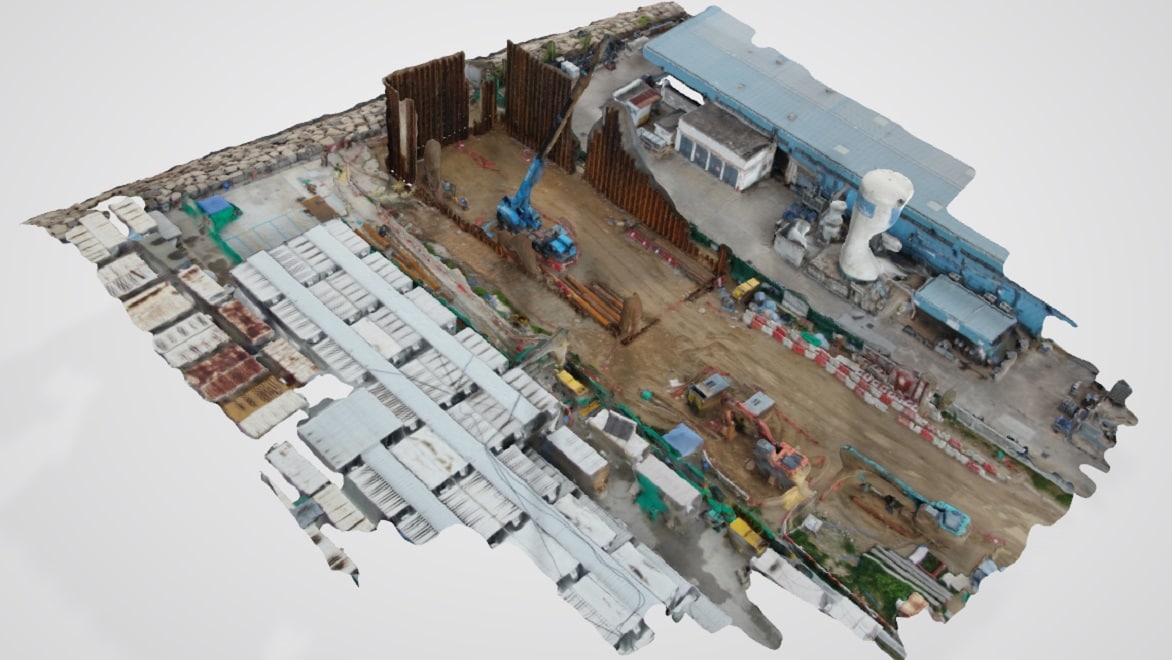
To keep the BIM models for AMC updated, the Gammon team made use of photogrammetry—the science of deriving measurements from photographs. Image courtesy of Gammon Construction.
Improving professional skills at Gammon Construction
To accelerate the project team's adoption of the 3D BIM environment and digital delivery on the construction site, Gammon focused on skills development through training. While most of the team trained in BIM and DfMA, the firm also discovered the different ways mentoring could be an essential tool for improving professionalism and modernizing the firm.
“You can find people with the right skillset, or you can train them to reach a high caliber,” Lai says. “But the most important thing is having the right mindset and attitude.” To achieve that, Gammon carried out traditional mentoring—with junior staff learning from senior staff—and reverse mentoring, where junior employees mentored senior staffers. “These junior employees are born digital natives and have a different mindset, so our senior employees can learn more about new digital apps or construction technologies,” Lai says.
Beyond that, mentoring activities helped to encourage a work environment that fosters learning, listening, openness, and teamwork. “When our more experienced people work together with our younger engineers, a bond is created,” Lai says. “Everybody tries to achieve the same goals to the best of their abilities, and they’re willing to voice out a problem and resolve it together.” Gammon is also adopting a culture of diversity and inclusion. “We have a mix of old and young team members, and our female ratio is about 20% in a team,” he says. “We have women colleagues in different positions and at different levels—engineers, assistant project managers, and managers.”
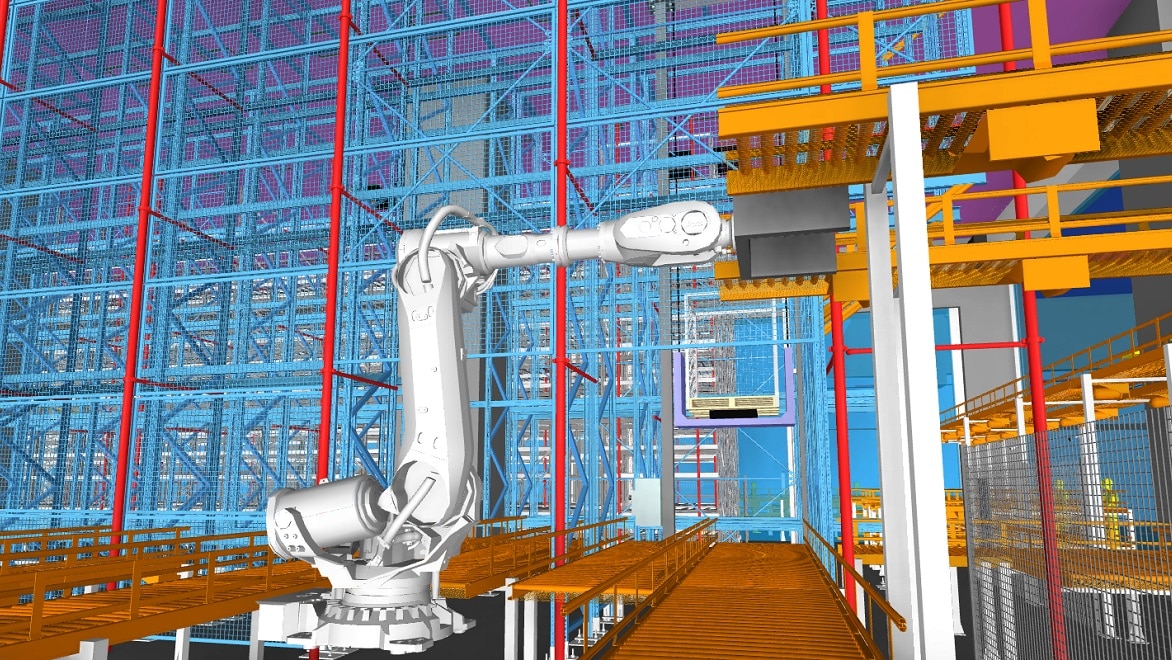
A 3D model of a factory installation shows automated logistics equipment in AMC. Image courtesy of Gammon Construction.
Revitalizing Hong Kong's construction industry
The Hong Kong Advanced Manufacturing Centre facility officially opened in Spring 2022, and Gammon’s efforts in the AMC project are one step toward revitalizing the construction industry in Hong Kong. In recognition of the project's innovative use of construction technology, the company was recognized with an Autodesk Hong Kong BIM Award—and its methods could also be a path for other firms to follow.
Lai envisions an increasingly digital future attracting a younger generation to join the industry. “The skillsets will be different,” he says. “It won’t only be engineering and construction, but a mix of factory management, logistics management, and even software engineering. At our company, for example, we are hiring more engineers, but also more factory managers and logistics managers, and we’re sharing our knowledge with them.”
“There will be a paradigm shift in the construction industry where off-site manufacturing will be extensively used, and digital tools will control the sequence and workflow of construction,” he adds. “We have to change our mindset and move toward a more digital future.”











